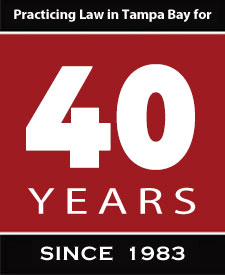This past week I gave a talk and participated in a panel discussion regarding the collaborative law process for the Clearwater Bar Association. What follows is a synopsis of my presentation.
To explain the inefficiencies and cost of the typical litigated family law matter, I turn to a prior blog I wrote concerning the research of William Muir of Purdue University. He was interested in methods to obtain the most productive chickens—the one’s that laid the most eggs. He devised an experiment. He took an average flock of chickens and left it alone for six generations. Then he created a separate flock of super chickens. After each generation, he selected only the most productive for breeding. After six generations what did he find? The average group was doing just fine. They were plump and fully feathered and egg production had increased dramatically. What about the second group? Well, all but three were dead. They had pecked each other to death.
The individually productive chickens had only achieved their success by suppressing the productivity of the rest. Our legal system promotes a similar paradigm: success is achieved by picking the super lawyers, and giving them all the resources and all the power. The result—aggression, dysfunction and waste.
Is there a better way? Abraham Lincoln thought so. After his death, fragments of a speech were found that was addressed to those who were studying law. This is what he said:
Discourage litigation. Persuade your neighbors to compromise whenever you can. Point out to them how the nominal winner is often a real loser – in fees, expenses and waste of time. As a peace maker, the lawyer has a superior opportunity to be a good man. There will be business enough.
The collaborative process is different from the litigation model. Although attorney/client privilege is maintained, it is a team approach. For many lawyers who were brought up as litigators (as I was) this requires a rewiring of the brain.
We are taught in collaborative training not to take positions. Rather, we help our clients build options.
The very first thing a lawyer needs to do is to explain the collaborative process to the client. I make it an option for the client to choose. For various reasons, not every client is appropriate for the collaborative process. In the collaborative group that I am a member of, our collaborative agreements provide for the withdrawal of the attorneys and other team members in the event that an agreement is not reached. This is an important ingredient to the collaborative experience. Every team member and client has a vested interest in seeing the process through to a successful conclusion. A contextual explanation of this from the attorney is key.
Once the client chooses the collaborative option there is the matter of his or her spouse finding a collaborative attorney. The websites of the collaborative law practice groups are a good place to find a collaborative attorney.
The two collaborative attorneys then choose the other team members – a neutral financial person and a neutral mental health/facilitator person.
Prior to the first meeting the neutral mental health/facilitator will often meet with the parties separately and screen them as appropriate for the collaborative process. A party who suffers from a personality disorder, for example, can be a challenge to the process. In such a case, the team will decide whether to go forward or whether to abandon the collaborative process.
At the first meeting the collaborative law agreement is signed by the parties. The professionals are paid by this time, and additional meetings are set. In many cases the neutral accountant does his or her work first, gathering information to prepare an equitable distribution schedule. Issues of valuation are addressed, and appraisals may be necessary.
The neutral mental health professional often assists in helping the parties arrive at a parenting plan. Although this professional doesn’t perform counseling for the parties, at times he or she engages in intervention with the parties to resolve an immediate problem or crisis. Otherwise, this neutral professional typically runs the meeting and prepares the agenda.
Every meeting is preceded by a professional’s phone call. At every meeting, the professionals meet first for about a half of an hour. Notes of the meeting are taken by one of the professionals and transcribed once approved. The case is kept on track, as homework assignments are given out during each meeting.
In conclusion, as a collaborative professional, the lawyer has the superior opportunity to be a good person. It is a good alternative for the right client. Lawyers would do well to receive collaborative training so they can afford their clients this option.


